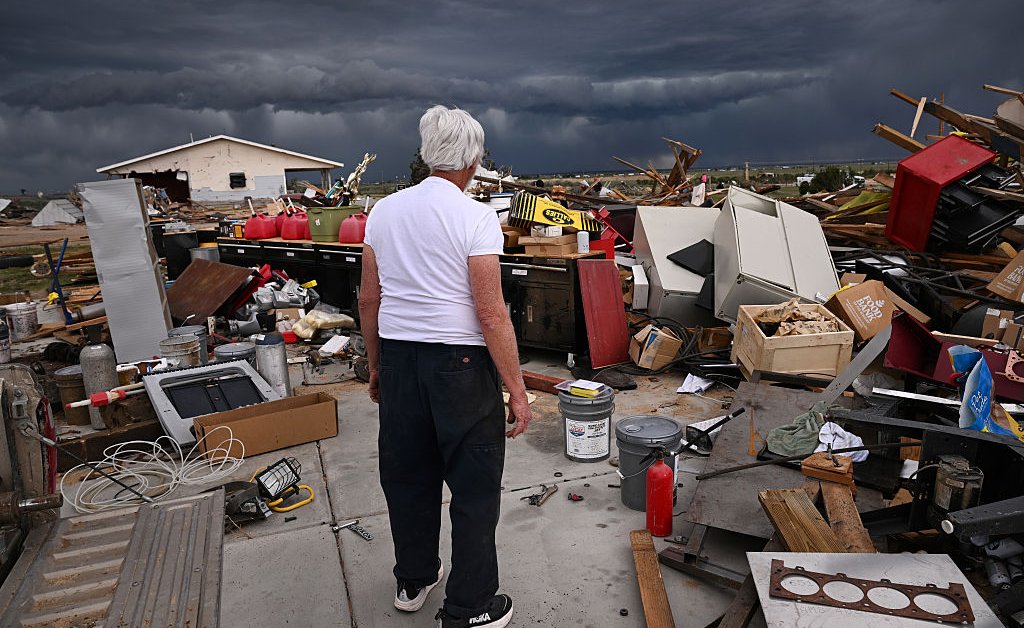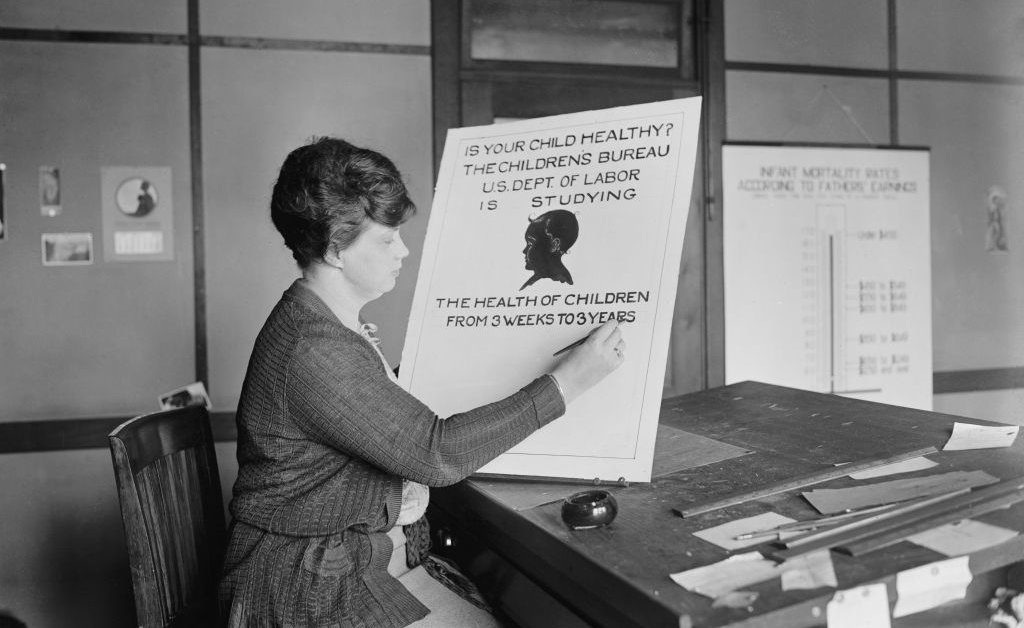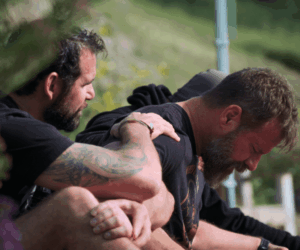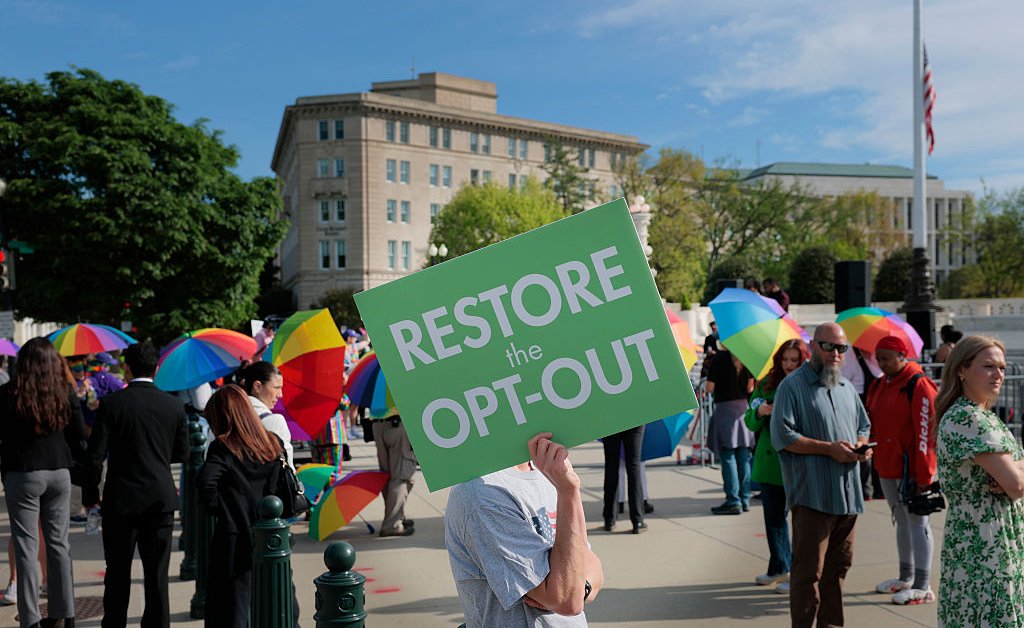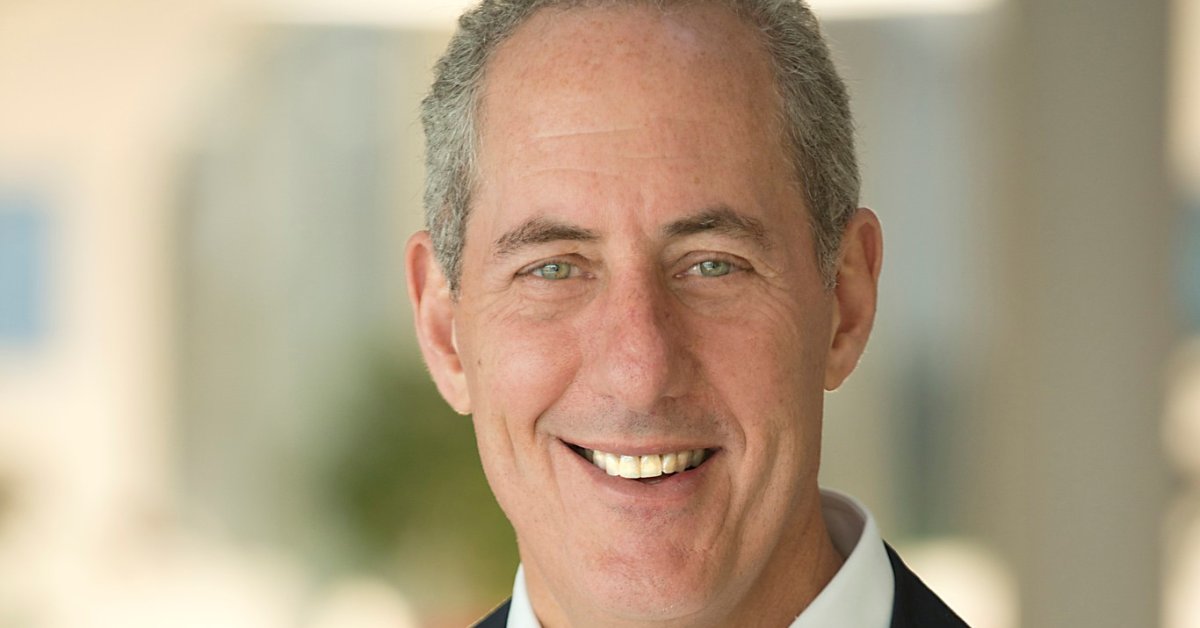Severe storms and towering tornadoes killed at least 28 people across the Midwest and South from May 17 to May 18. The last tornadoes to cause these types of mass casualties were in 2021, killing 93 people in Missouri, Tennessee, Arkansas, and Kentucky while inflicting $4.5 billion in damages. More billion-dollar disasters are laying waste to American cities each year, but soon the public will have no idea how bad these damages really are.
On May 8, the National Oceanic and Atmospheric Administration (NOAA) announced that its well-known “billion-dollar weather and climate disasters” database “will be retired.” As part of the Trump administration’s focus on killing programs associated with “climate,” this irreproducible source of information for taxpayers, media, and researchers will soon no longer be able to track the devastating cost of natural disasters. But low-income communities—who are at the greatest risk of these disasters—are about to feel the biggest blowback.

The number of natural disasters that cost over a billion dollars has increased more than sixfold since 1980. The chart above uses available NOAA data to show a meteoric rise in catastrophic events, largely due to severe storms like the ones currently hitting the South and Midwest. From 1980 to 2000, 96 disasters caused more than $546.3 billion in damages. In the next 20 years from 2000 to 2020, these figures rose to 244 events and more than $1.95 trillion in damages—marking a 154% increase in the number of billion-dollar disasters and a 257% surge in costs.
Read More: The Superstorm Era Is Upon Us
Every state has now experienced a billion-dollar natural disaster, but the severity and frequency of these are rising, largely due to two significant shifts: First, the U.S. is building far more expensive properties. Even though the NOAA data is inflation adjusted, the cost of buildings, their density, and their interiors have skyrocketed. Wealth in risky coastal counties doubled from 1980 to 2020, largely driven by soaring home prices. Even low-income neighborhoods have much more expensive buildings due to costly regulatory reviews, as Ezra Klein and Derek Thompson point out in Abundance. Second, the U.S. is building in more disaster-prone areas. Homes are increasingly built in regions where the wildfire season is 105 days longer than it was in 1970, half the U.S. population now lives in towns where 100-year floods are twice as common as they were just a few decades ago, and most of the southwest—the fastest growing part of the U.S.—has been under a drought advisory for the last 20 years.
The dangers of summer

The loss of the NOAA data comes at a particularly dangerous time of the year when hurricanes, floods, and wildfires are about to explode. Summer is the worst time for the nation’s deadliest natural disasters. Nearly half of all billion-dollar disasters from 1980-2024 have occurred between May and August, according to the NOAA data still available. Severe storms inundate communities in May (as we’ve just seen), droughts sear the nation in June, and then wildfires burn the arid land in July through August. Fourteen of these monumental disasters hit the U.S. last summer that cost the U.S. $41 billion and killed 108 people. This will be the last time that we’ll know these values for the foreseeable future.
The indirect costs of these storms that hit in summer are even harder to calculate. According to the U.S. Farm Bureau, natural disasters in 2024 caused $20.4 billion in crop losses due to freezes, droughts, and fires, nearly half of which was uninsured. These losses aren’t just bad for farmers, they raise food prices across the country. Roads may be destroyed, which causes severe disruptions to the supply chain. If one store shutters, for example, several others may follow suit. Long-term health impacts of backed-up sewage and toxic chemicals can leave communities struggling for decades. Student GPAs fall by 0.3 points for every natural disaster that hits a community and those students become 10% less likely to enroll in STEM courses due to the more challenging workload. Flood risk is 21% higher in low-income neighborhoods (median household income below $55,000) versus high-income neighborhoods. Homes in low-income areas are 29% more likely to be destroyed by wildfires due to poor structural conditions like infrequent roof repairs, as well as much further access from emergency services like fire departments that can’t respond in time.

The rich move away while the poor have to stay
It’s a vicious cycle that the most at-risk communities in America—with the lowest incomes, home insurance rates, and test scores—are the ones that get slammed by storms over and over again. In 2020, A team of researchers from Princeton and UCLA analyzed all natural disasters in the U.S. over a 90-year period, combining data from NOAA, the American Red Cross, and FEMA. They looked not just at the state-level data, but at the county level to understand what was happening in specific communities. They found that after a natural disaster “the rich move away from disaster-prone areas, while the poor are left behind…showing that these trends may worsen inequality in the U.S.” When those disasters strike again in flood zones, in the paths of hurricanes, and in the line of wildfires, the only people left are the people least prepared to manage the fallout.
Not only do natural disasters hit low-income communities the hardest, but they also push people further into poverty. The Princeton and UCLA team found in the county-level data that when a super severe storm hits (defined as 100 or more deaths), poverty in the area increases by one percentage point. Rich people were able to leave, but the poor did not have the funds to restart elsewhere.
“Natural disaster exposure risk could become another cause of rising inequality between the rich and the poor. Our study suggests that areas that do not adapt to natural disaster risk will become poorer over time,” wrote the Princeton and UCLA team. Researchers from the Federal Reserve confirmed these findings. They found that 10 years after Hurricane Katrina, families whose homes had flooded had lower credit scores and lower rates of home ownership, driving massive divides in New Orleans between poverty and prosperity.
Dozens of researchers have found that homes in formerly redlined areas are among the most at-risk areas for climate disasters. A 2023 report from the Federal Reserve found, “Neighborhoods that were redlined in the 1930s-1940s by the Home Owners’ Loan Corporation face disproportionately higher risks of both current and future flooding and extreme heat.” On top of that, those homes tend to have worse infrastructure to manage those events, lacking proper drainage, reinforced foundations, and structurally sound roofs.
Bouncing back from a billion-dollar loss is nearly impossible
After billion-dollar disasters come, jobs wash away, savings disappear, home values plummet, school days tick by without attendance, and communities fall further and further behind. In one global study of natural disasters over a 30 year period, researchers found that annual household incomes fell by 21.5% and took almost a decade to recover. After a natural disaster, low-income families in particular take two to three times longer to financially recover compared to their wealthier counterparts.
Recovery efforts are often inequitably distributed. In FEMA’s own 2021 analysis of 4.8 million aid registrations submitted by disaster survivors between 2014 and 2018, they found that the poorest renters were 23% less likely than higher-income renters to get housing aid. Moreover, the poorest homeowners received about half as much to rebuild their homes compared with higher-income homeowners (disparities that researchers say cannot be explained by relative repair costs). And lastly, FEMA was about twice as likely to deny housing assistance to lower-income disaster survivors because the agency judged the damage to their home to be “insufficient.”
Federal aid from natural disasters can be the difference between life and death for impoverished households. “When a hurricane damages your home, a clock starts ticking. Every day without stable shelter makes it more likely that the blow dealt by the storm will unleash a cascade of problems,” explained NPR’s Ailsa Chang. “Children miss school, adults are unable to work, older adults stop taking life-saving medication. Mold and heat exposure threaten to make everyone sick”
In 2019, the head of FEMA, Peter Gaynor, shared that the agency’s financial responsibility had become “unsustainable” as costs had risen. “The only way we can survive as a nation,” Gaynor said, “is to set aside pre-disaster money and build state and local capacity.”
Developers now build closer to shorelines, deeper into wildfire-prone forests, and nearer to floodplains. Extreme heat and cold kill far more older adults, young children, and those with chronic medical conditions than ever before. Without knowing the costs of these disasters, the U.S. government will fail to provide the proper financial compensation to these impacted families. And without this information, America’s most vulnerable communities have the most to lose.

